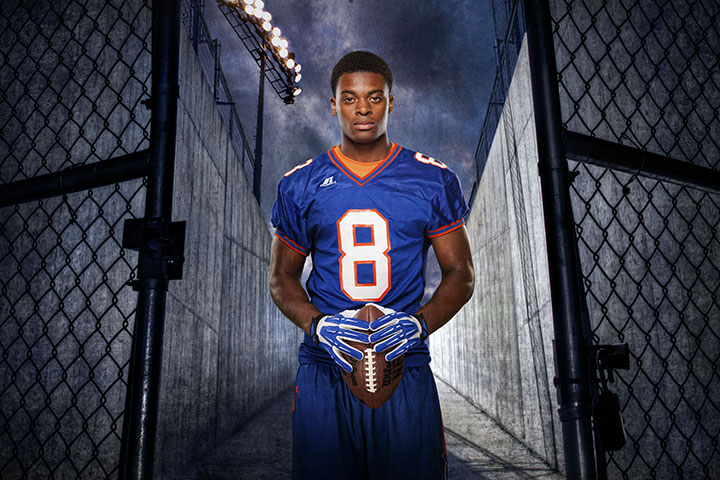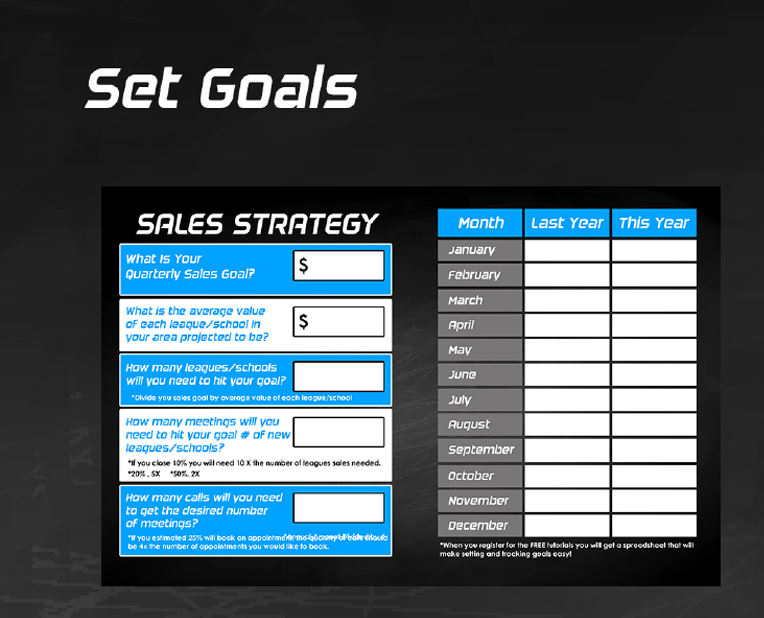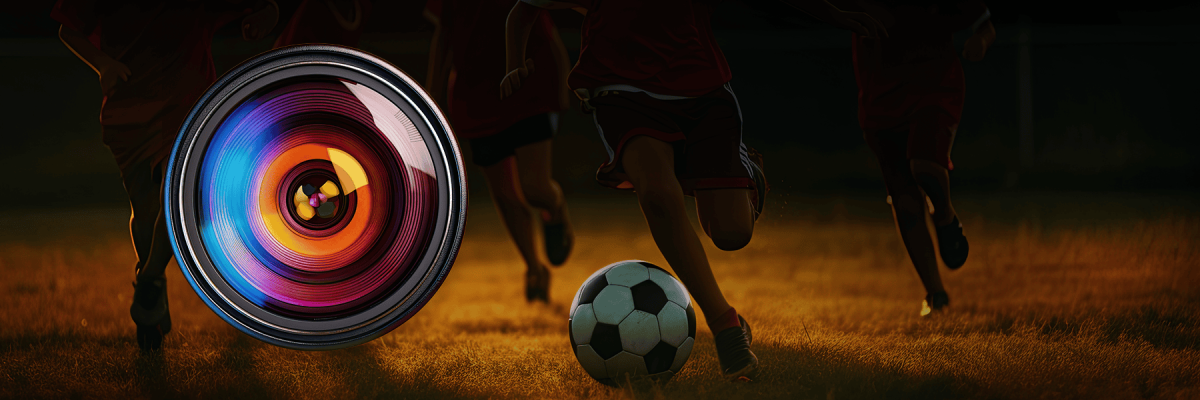Are you ready to take your photography business to the next level? With over 25 years of experience in the industry, I've had the privilege of working with thousands of volume sports photographers. One of the most frequently asked questions I get is: “How do I grow my business or transition from a part-time gig to a full-time career?” In a survey we conducted last year with over 10,000 photographers, this was the number one pain point mentioned. In the following sections, we'll address this question and provide valuable guidance. So, if you want to turn your passion into your primary source of income, read on!
Entering the youth sports photography business might seem daunting at first. After all, it's highly competitive. Nevertheless, if you stop worrying about the competition and start focusing on improving yourself and your business, you'll likely stay ahead of the game.
In fact, as a sports photographer, the key to success lies in spending as much time and money on the business side as you do on the technical one.
There's no better time than now to begin your journey as a youth sports photographer. The youth sports market represents a $40 billion industry annually, with some forecasts suggesting expansion to $70 billion by 2030.
Don't know where to start? Our guide may be the answer you've been looking for. Keep reading to learn how to enter the youth sports photography business and how to make $100K per year in this niche.
Table of Contents
ToggleWhat Is High-Volume Sports Photography?

BBeing a photographer means always looking for the next opportunity. However, there's one profitable niche that often gets overlooked: high-volume photography.
This type of photography is easy to set up—you essentially arrange a single setup and photograph several subjects with that backdrop. You don't need to think about complex angles or flattering poses; you just need to ensure the frames are consistent.
You don't need cutting-edge equipment or advanced Photoshop skills for youth sports photos. What you do need are connections, which you build by practicing high-volume sports photography regularly to develop a consistent stream of clients.
So, how do you start building a clientele as a youth sports photographer?
- Contact local leagues and offer your photography services
- Establish an online presence showcasing your sports photography services
- Build a brand focused on volume photography
Youth sports photography is an excellent segment of volume photography. Children are among the most popular subjects to photograph, and since parents want to document their children's extracurricular activities, youth sports photography can be both profitable and enjoyable.
Youth Sports Photography 101
Volume photography may not be as creative as some niches, but it's a highly lucrative career. Generally, once a client hires you for their league, they tend to stick with you long-term. Of course, you need to deliver high-quality products and excellent service, especially the first time around. We have leagues that have been with us for over 20 years. The lifetime value of these accounts cannot be understated.
- TIP
You don't need to spend long hours on a shoot. Our rule of thumb is to allow 15 minutes per team, even though it usually takes much less, especially for smaller teams like soccer and baseball.
Want to learn our tricks for an efficient shoot? Check out our article on photo day scheduling.
Volume photography doesn't require extensive creativity. Once you have your lighting and background set, it's straightforward to photograph many youth sports players quickly. With an efficient setup, you'll use the same camera settings and lighting for all photos.
To make high-volume sports photography even easier, check out our secrets to posing teams and groups.
Since lighting and camera settings remain consistent, there are minimal edits needed. While this niche may not be as creative as other photography genres, it's lucrative and provides steady income. Plus, once you get these processes dialed in, you'll have a scalable business.
Now that you've learned the basics of volume sports photography, it's time to discover how you can earn six figures per year as a youth sports photographer.
More Youth Sports Photography Benefits
Your Quick Guide to Managing Your Youth Sports Photography Business

Firstly, it's crucial to know your numbers.
You might not expect this, but tracking metrics such as average order value and participation rate is essential for your business's success. Taking great photos and having quality equipment isn't enough for youth sports photographers.
To make a profit with youth sports photos, focus on these three key indicators:
Indicator 1: Average Order Value (AOV)
Indicator 2: Participation Rate
Indicator 3: Profitability
While you likely already have strong photography expertise, let's enhance it with essential business knowledge that will help you dominate the youth sports photography industry.
Below is a breakdown of how each performance indicator works.
Average Order Value (AOV)
What Is the AOV?
TThis key performance indicator measures the average total of every order placed over a defined period. To calculate your company's AOV, simply divide total revenue by the number of orders.
Revenue ÷ Number of Orders = Average Order Value
For example, if your business has a total annual revenue of $150,000 split among 3750 orders, you have a $40 AOV.
Since AOV is calculated using sales per order rather than sales per customer, each order is counted separately even if a client makes multiple purchases.

Remember that average order value varies by sport and age group. Some sports naturally generate higher AOVs than others.
Our AOV Rule of Thumb
For example, football, cheerleading, and baseball typically have much higher AOVs than soccer, swimming, or track.
How to Improve Your AOV
- Cross-sell & Upsell: These classic tactics work when implemented properly. Don't recommend random packages, as this makes you seem desperate and annoying. Instead, suggest packages and digital products (presets, courses, e-books, etc.) that complement items in the customer's cart. For example, Prepay Systems has an upsell feature built into their software that effectively increases AOV.
When our customers reach checkout, they're asked if they'd like to “add a magnet” to their order. On average, 35% of customers opt for these extras.
- Set a minimum order for free shipping: This method is common because it works. Set this threshold by researching typical order values. For example, if your orders usually average $100, you might offer free shipping for orders over $120.
According to Aaron Zakowski, you should set this limit about 30% higher than your average order value.
You could also offer a product instead of free shipping. For instance, we ran a promotion for dance schools where customers received a free frame with every $100 purchase. You'd be surprised how many customers added another $25 to qualify for this promotion.
- Offer Packages: By grouping youth sports photos that complement each other and selling them in packages, you'll increase the perceived value of your products. You can also attract more buyers by offering a slight discount when they purchase multiple packages.
Want to improve your AOV even more? Check out our ideas that will help you increase sales.
Participation Rate
This indicates the percentage of people who buy pictures. For example, if a league has 500 players, but only 420 parents purchase pictures, you have an 84% participation rate.
Of course, participation rates vary by sport and demographics, but we typically average around 84% participation.
Our Participation Rate Rule of Thumb
Younger players have both higher AOVs and higher participation rates. As players get older, parents generally invest less in pictures.
Additionally, sports like football or baseball have higher participation rates than flag football and soccer. Some photographers focus exclusively on football, cheerleading, and baseball because low participation rates typically result in lower average order values.
Profitability
Profitability measures the relationship between your business's revenue and expenses. Simply put, it's the amount left after you cover your expenses with sales revenue.
Total Revenue – Total Expense = Profit
For example, if you sell $115,000 worth of youth sports photography packages annually and your total operating expenses are $15,000 (studio rent, utilities, equipment, merchandise, etc.), you'll have an annual profit of $100,000.
- TIP
The answer is not until you absolutely positively have to.
Increased revenue doesn't necessarily mean increased profitability. To determine if your business is profitable, it's best to calculate margin ratios.
Different profit margins are used to assess a company's profitability as various cost levels are considered, such as operating margin, gross margin, or net profit margin. The more additional costs factored in, the more the margin shrinks.
- Gross margin: The revenue remaining after subtracting production costs. The gross margin indicates how efficiently a business generates profit. A higher gross margin reflects greater operational efficiency, suggesting the business can cover operating expenses or fixed costs while still generating net earnings.
❗ Stated as a percentage
- Operating margin: Shows how efficiently a company generates profit from its core business. The operating margin examines profit before interest and taxes but after paying variable costs such as one-off equipment purchases, quarterly taxes, or social media promotional materials.
❗ Stated as a percentage
- Net profit margin: Provides a comprehensive picture of a company's profitability after accounting for all expenses, including interest and taxes. The net profit margin considers everything, including one-time gains or expenses.
❗ Stated as a percentage but can also be expressed in decimal form
Remember that understanding margins is essential for setting realistic sales targets and achieving your $100,000 annual goal.
In our opinion, the net margin should be 50% of the gross one.

Top 3 Tips for Succeeding as A Youth Sports Photographer

Making $100,000 in the youth sports photography business requires three essential elements:
- A well-thought-out plan
- Dedication
- Focus on the business side
In this niche, having the right pricing and a strategic marketing approach is what sets you apart from competitors. The most successful youth sports photographers focus on sales and marketing above all else.
Below is a breakdown of the tips that will help you succeed in youth sports photography. Remember, these three steps are interconnected—you can't ignore one and excel at the others. Think of it like a video game where all elements must work together.
Sales & Marketing
Now that you understand the numbers, youth sports photography becomes essentially a sales game.
Here are the key factors to consider when starting your youth sports photography business:
- The desired income: In this case, it's clear: $100,000
- The net profit margin
- The Average Order Value
- The necessary sales: Once you've established your AOV, calculating how many sales you need to reach your income goal becomes straightforward
- The average league size
- The number of leagues per season
- The number of leagues per year
- The number of weekends booked
- The number of weekends booked per season
- The number of weekends booked per year
- The number of photo teams needed
After determining these factors, finding desirable jobs becomes easier because you'll know exactly how much work you need to meet your target.
Set Goals

As your own boss in this business, if you want to make $100k per year, you must act accordingly. Setting goals isn't optional—it's essential.
You should establish quarterly, monthly, weekly, and even daily goals to set yourself up for success. This plan will serve as your blueprint for meeting your business objectives.
- Weekly calendar: What specific actions this week will move you closer to your goal?
- Monthly calendar: Plan your monthly jobs with your end goal in mind.
- Monthly scoreboard: Track your sales progress on a monthly scoreboard. Review it at month's end and make necessary adjustments for the following month to stay on target.
- Quarterly scoreboard: Regular evaluation is crucial to meeting your annual sales goal. Set up quarterly reviews and adjust your strategy as needed.
Focus on The Right Opportunities
Your first years as a youth sports photographer are especially crucial. Building a strong portfolio requires focusing on activities that directly advance your goals.
For example, while learning the latest Photoshop techniques might be useful, making 10 more sales calls would likely bring you closer to your financial goals. If you want to earn $100k annually and make this your full-time job, concentrate on tasks that directly impact your bottom line. Success comes down to discipline and focus.
- TIP
Check out our tips for creating a youth sports envelope if you want to give your business a boost and get those highest paying photography jobs.
After setting your goals, prioritize activities that help you meet your sales targets. Learn to say NO to distractions and opportunities that don't align with your objectives.
Work on Your Mindset
According to Gerhard Gschwandtner's sales success framework, there are three essentials for sales success:
- Skill set
- Tool set
- Mindset
In fact, once you develop the right mindset, mastering the necessary skills and acquiring the proper tools becomes much easier.
Key Business Metrics
The Road to Success: How to Make 100k per Year as a Youth Sports Photographer

While mindset, focus, and discipline are crucial for success as a sports photographer, you must also understand certain key numbers to thrive in the volume sports photography business.
Average Deal Size
This metric indicates the average size of leagues in your area (which varies based on demographics). It's calculated by dividing your total revenue over a specific period by the number of closed-won opportunities in that segment.
Tracking this key performance indicator is essential for understanding your business's financial health.
Keep in mind that while average deal size is significant, it's not fixed—there are ways to increase it.
Close Rate
The close rate (or closing ratio) measures your sales efficiency. It shows what percentage of your prospects actually make a purchase.
To calculate this percentage, divide the number of closed deals by the total number of sales leads for a given period, then multiply by 100.
Closed Deals ÷ Total Sales Leads × 100 = Close Rate
For example, if you closed 7 deals out of 14 leads, your close rate would be 7 ÷ 14 × 100 = 50%.
Remember that closing rates vary across different businesses and industries—there's no universal “perfect” closing rate.
Setting Goals and Quotas
As mentioned earlier, once you understand the numbers, youth sports photography becomes essentially a sales game. After determining your average deal size and close rate, you simply need to calculate how many calls to make daily, weekly, monthly, and quarterly to reach your sales targets.
To achieve this, you need to establish clear goals. We'll break these down in the next section.

Key Terms Explained
Annual Wins Required
This is your quota divided by your average deal size, a critical metric for understanding your prospecting needs.
Annual Opportunities Required
This represents how many prospects you need in your pipeline throughout the year, based on your historical win ratio.
Annual Opportunities Required (Insurance)
Add 25% more prospects than your win ratio suggests to create a safety margin.
Monthly Wins Required
The number of clients you must secure each month, calculated from your deal size and annual deal requirements.
Monthly Opportunities Required
The number of qualified prospects you need to bring into your pipeline each month, based on your deal size and win ratio.
Monthly Opportunities Required (Insurance)
Add 25% more prospects than your calculated monthly requirement for added security.
Opportunity Spend Required
The amount of new investment needed in your monthly pipeline, calculated using your annual quota, average deal size, and prospect requirements.
Now Back to You!
Want to grow as a youth sports photographer? Looking for a reliable income stream from sports photography? Ready to build a loyal client base? Tired of disappointing results?
If you answered yes, I have an important question for you:
Want Help Growing Your Youth Sports Photography Business?

PSU Education is dedicated to transforming your sports photography from ordinary to extraordinary.
Need step-by-step training and coaching to keep your business growth on track?
You've come to the right place.
We'll help you with everything from prospecting and marketing to presentation techniques and client retention. What are you waiting for? Join us today and take your youth sports photography business to new heights!







